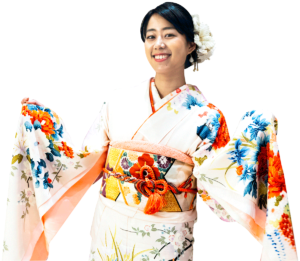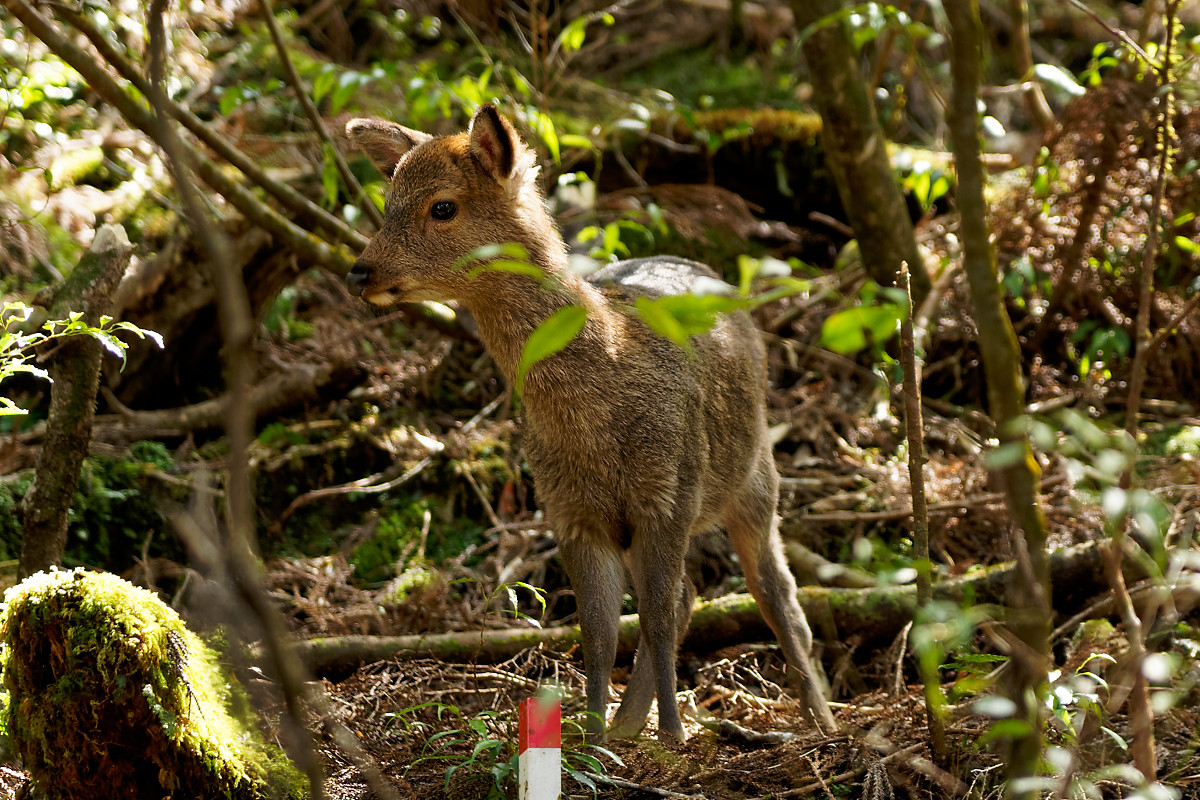Ask most people to represent Japan in one picture, and more often than not it will be a shinkansen going past Mt. Fuji, with a cherry blossoms scattered in the background. While Mt. Fuji and Shinkasen are omnipresent throughout the year, however, cherry blossoms are not. Unfortunately, or perhaps fortunately, they are only ephemeral. When do they do show up, however, it is an event throughout the country. Hanami is how Japan celebrates this short-termed wonder of nature.
Hanami (=花見) simply means flower viewing. Every year, cherry trees, or sakura trees as they are known in Japan start flowering from late March to mid April, marking the beginning of spring. These flowers of pink to white color cover the entire country and for the duration of that time, the entirety of Japan stops. They stop to take pictures, and more importantly, they stop to have a day dedicated to sitting among the trees, with family, friends, coworkers, sometimes individually, sometimes with combinations of those groups. They eat, drink, and stand in awe at the beauty that is nature.


Hanami, or ohanami (adding the “o” makes it a degree of politeness above) plays two roles. To some, like me, it’s a great time to have a picnic and use nature as an excuse to drink in a park and gather as many of my friends as possible. Within Japanese culture, though, it’s a little more than that. It marks the start of spring, of new beginnings. For Japanese high schoolers who take their university entrance exams generally in February, hanami season acts as both a very pretty buffer zone between the hard time they spent working and the start of university, but also symbolizes a turning point in their lives. Otashift’s Mona made sure to point out how marked she was by seeing cherry blossoms after having passed her exams. Finally, in Japan ephemera is a very important concept in Japan. Mono no aware (lit. The pathos of things) can be better objectified by none other than sakura, which fall and disappear only a week or so after appearing.
If you’d like to see cherry blossoms in Japan, the window is very short. The good news is Japanese cherry trees blossom at different times depending on the location, because of temperature differences. It starts westwards first, and makes its way east. That is to say if you’ve just missed in Kyushu, but will be in Tokyo after, you might catch it there. Within a single place however, sakura trees will blossom for 3 weeks from the very start, to the very finish, when they’ve all fallen, and tosee the cherry blossoms at their mightiest, you have about a week. So if partaking in the great ceremonial drinking in parks while watching cherry blossoms that is hanami, you’ll need to plan for it.
WHEN ARE CHERRY BLOSSOMS BLOOMING THIS YEAR?
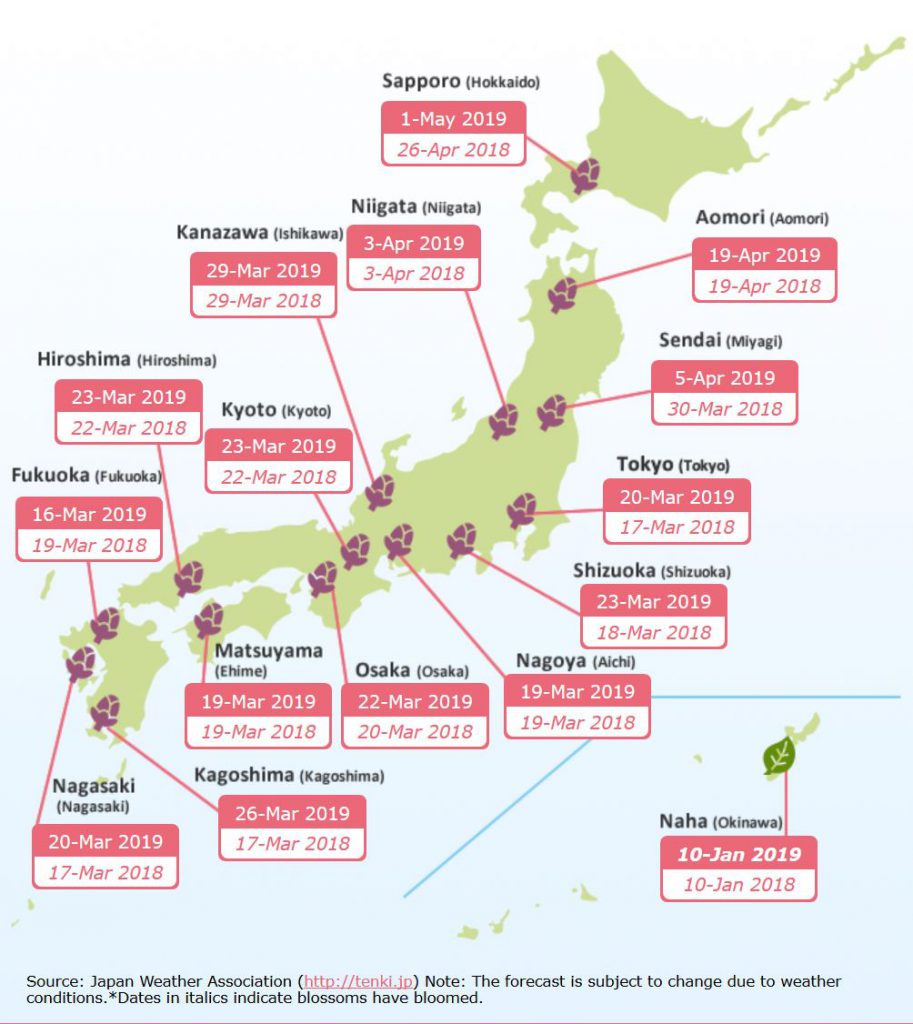
The blooming of cherry blossoms vary each year depending on the climate. In general, the milder the climate, the earlier cherry blossom season begins. In Tokyo, Osaka and Kyoto it’s generally around the same time towards the end of March, Tokyo being slightly ahead. Hokkaido is generally last, and will sakura trees will start blooming in early May, while in Okinawa, it will start in January.
Every year, the Japan Weather Association releases the forecast for cherry tree blossom openings, and full bloom. Above is the one for 2019.
SAKURA FORECAST 2019

Check out cherry blossom 2019 forecasts bellow!
*day/month

THINGS TO CONSIDER WHEN PLANNING FOR HANAMI

As for any picnic, watching cherry blossoms requires a minimum of planning and logistics. Here are a few important things to take into consideration when planning for hanami.
RAINY WEATHER

Unfortunately, hanami season is also during a time when it starts raining more frequently. Check the weather app when deciding on the date of your sakura viewing. If there is a rainy day, try going before that day. Rain can considerably ruin cherry blossoms, especially if they are past peak bloom.
TEMPERATURE

Late March in Japan is a period of transition. It can go really quickly from cold to warm, in a matter of days, and hours. Again, check the weather, and pick your hanami day carefully. Within the same day, however, although it was while the sun is out, it may get really cold as soon as dawn hits. Bring something heavy to put on once the temperature drops.
TOILET PANIC

This depends on the place you’ve picked to view cherry blossoms. Most parks in Japan have toilet facilities. However, those might not be sufficient for the masses of people there for hanami. You may find yourself waiting for a while to use the toilet.
Often, in the more popular cherry blossom viewing places, they will plan and have portable toilets at the premises. However, at those, and in general in toilets in Japan, there is often no soap and/or toilet paper. Make sure you bring soap and wipes with you, especially if you are bringing kids to your hanami party.
POLLEN

Cherry blossoms symbolize the beginning of spring. For many that means, new beginnings and colorful fashion. For others, it means pollen allergies. If you are one such person, make sure you bring your meds. Hanami season coincides with high levels of atmospheric pollen. Don’t let that impede you from having a great time viewing cherry blossoms.
WHICH HANAMI STYLE IS BEST FOR YOU?

There are two main ways of viewing cherry blossoms. This is largely dependent on personal preference, number of people, and laziness levels.
1. WALKING THROUGH A FIELD OF CHERRY BLOSSOM TREES

This is fitting for small groups or couples. There many places around Japan with sakura trees lined up across long-ish distances that you can walk as you observe the cherry blossoms. An advantage is that you do not need much planning for this. Just bring yourself, and whomever you’ll be enjoying the cherry blossoms with, and maybe a snack to eat at a bench nearby.
For the especially sporty ones, you can make a hiking trip out of this. Many of Japans hiking spots are great destinations for sakura viewing, including some near Tokyo. If you’re into hiking, consider going on a hike and hanami combination.
THINGS YOU SHOULD KNOW
Many of the places to view cherry blossoms this way are car-free zones, but there may not be sufficient sitting areas. If you’re with children, you may not want to do it. In addition, you might not find food stalls in the area, and the lack of sitting areas means you can’t have too fancy a meal. I’d recommend just bringing a small snack and a drink.
2. HAVING A PICNIC UNDER SAKURA TREES

This is what many, me included, think of when thinking of hanami. It’s the aforementioned usage of cherry blossoms as an excuse to gathering up friends, family, co-workers, sometimes individually, other times in combinations, and heading to the park, surrounded by cherry blossoms, and feasting.
Different people do it differently. You can have a picnic of varying degrees of organization and price. A very Japanese way of doing it, is first getting drinks somewhere. Department stores such as Seibu and OIOI (read: marui), will have in their food areas special bento boxes meant for hanami. These can cost up to ¥1000 ($10) or even more. They are however done with great refinement and can be quite good.

If you’re like me, you’d do none of that. I enjoy making food for picnics. In general, hanami is an occasion to gather as many people different groups of my friends I don’t get to see often, and each contributing to some food to share. Naturally, each of us will flock to the convenience store or department store to stock up on booze.
GETTING HANAMI PICNIC SUPPLIES
Every year, I buy supplies for hanami, and the following year, they always vanish, and I have to buy them again. I’ve learned not to spend too much of those because of that. During cherry blossom season, most 100 yen stores will have all you need on display to have a proper hanami picnic. For those who don’t know 100 yen stores are where dreams are made, and where every single imaginable, and unimaginable item can be bought for ¥100 ($1).
Here is a list of things you might need for you hanami party:
- Picnic sheet (get a large one for food space)
- Garbage bags (enough so you can sort properly)
- Paper cups, plates, chopsticks
- Wipes and tissues
- Food containers
- Bottle/wine opener
- Optional: disposable body warmer to keep warm when the sun goes down.
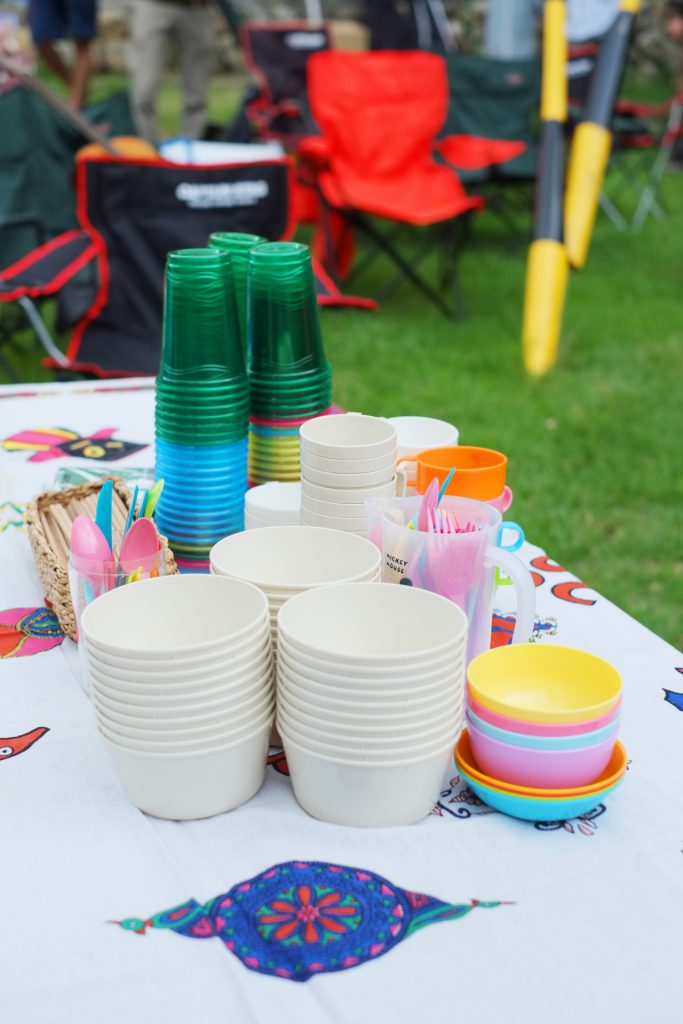
THINGS YOU SHOULD KNOW
If you’re going to a popular cherry tree viewing spot like Yoyogi Park (=代々木公園), you want at least a couple people to go there early to secure the spot and lay a mat. At peak blossom, those can be jam packed. In addition, make sure you stop at the convenience store beforehand. This is a habit I’ve made over the years. Even if I don’t think I need anything, I stop by the konbini quickly before heading to the park. I always find there was something I was missing, and I’ll get tons of messages from friends asking me to get something from the konbini that they have forgotten before going to the park.
3. VIEWING SAKURA FROM A RESTAURANT
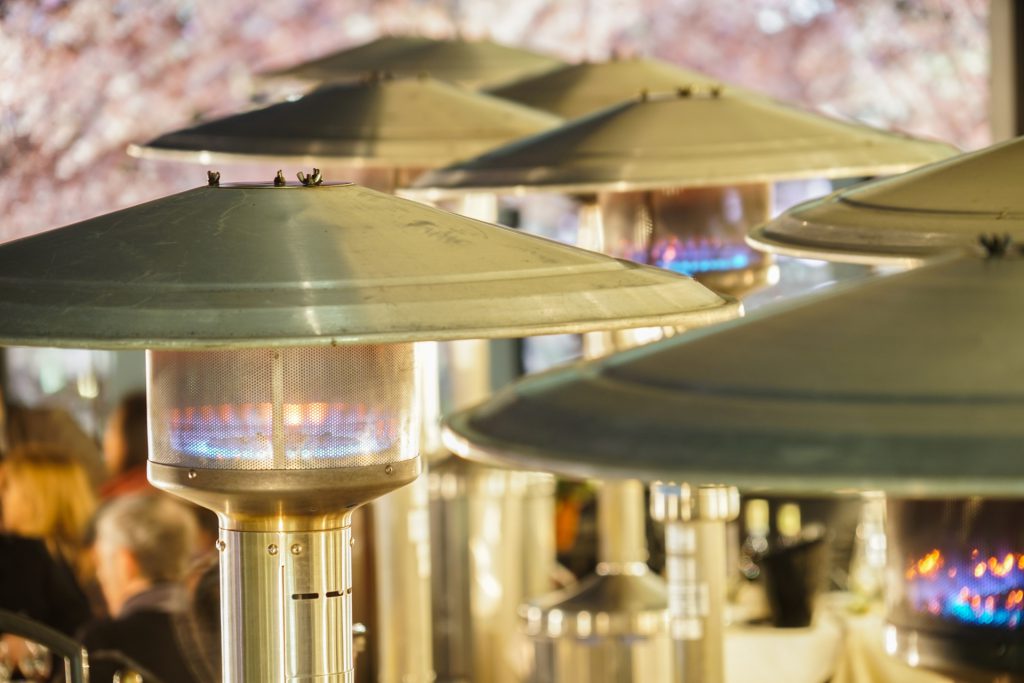
Not everyone likes nature, or cares to be outside to enjoy cherry blossoms, for one reason or another. Many restaurants are placed strategically near a site where sakura trees are lined up. This allows you to view sakura trees within the comfort of the inside, with food and drinks being made by someone else.
An advantage this has is it allows to view the cherry blossoms from angles which the other ways do not allow you. When picnicking in a part or walking through a field of sakura, you are limited to seeing the cherry blossoms from under. If you find a restaurant, bar, or café on an upper floor, it lets you see the cherry blossoms from above, and gives you a better, wider view of the whole field, which can be prettier than the other cherry blossom viewing methods.
THINGS YOU SHOULD KNOW
The more popular restaurants might be booked during this period. Often, in Japan you can go without reservation, but you will be asked to wait until a table is freed up. If you’d rather not wait, call ahead of reserve a table.
HANAMI TRICKS YOU MAY NOT KNOW

Hanami gurus, as well as those who have lived in Japan long enough quickly learn a few tricks when it comes to cherry blossom viewing.
FALLING CHERRY BLOSSOM

This is my personal favorite state at which to have hanami picnics. While most try to go when the cherry blossoms are at full bloom, I personally find them a lot more appealing when they’re slowly falling one by one. Being surrounded by falling pink petals is visually striking, and reminiscent of the aforementioned beauty in ephemera.
NIGHTTIME HANAMI

Viewing cherry blossoms at night is one of the most underrated ways to do hanami. If you can find a well-lit area with a high concentrationsakura trees, it’s, in my opinion, the best time for cherry blossom viewing. I actually prefer doing hanami while the cherry blossoms are falling, and from late afternoon to night. It’s a bit colder but there are less people, and it looks so, so much better. Afterwards, you can just go home, or move on to Tokyo’s vibrant nightlife spots.
If you can find a spot near water, it’s breathtaking. Nihonbashi in Tokyo is one such area. Two rows of sakura trees border the river and createsspectacular eye-candy.
SAKURA SPIRIT IN EVERYDAY LIFE

The same way in the west during Christmas season, there is an omnipresent Christmas spirit which can be felt either from people’s excitement, or simply by going to any department store and being overwhelmed with obnoxious Christmas jingles, there seems to be a sakura spirit in Japan. Maybe because it is the end of winter and high heating bills, or the fact it’s during school holidays, but cherry blossoms seem to come with an aura of joy and excitement. And naturally, because it is Japan, it comes with loads of sakura flavored things like Starbucks drinks, Kit Kat flavors, sakura drinks, and the likes.
Sakura season is one of the most popular times for tourists to visit Japan, and for good reason, but most seem to just go somewhere with cherry blossoms, take a few macro pictures and leave. If you’re here while cherry blossoms are blooming, try organizing your own hanami and partake in the glorious activity that is drinking in a park under the pretext of gazing at nature, just to end up actually gazing at it.




